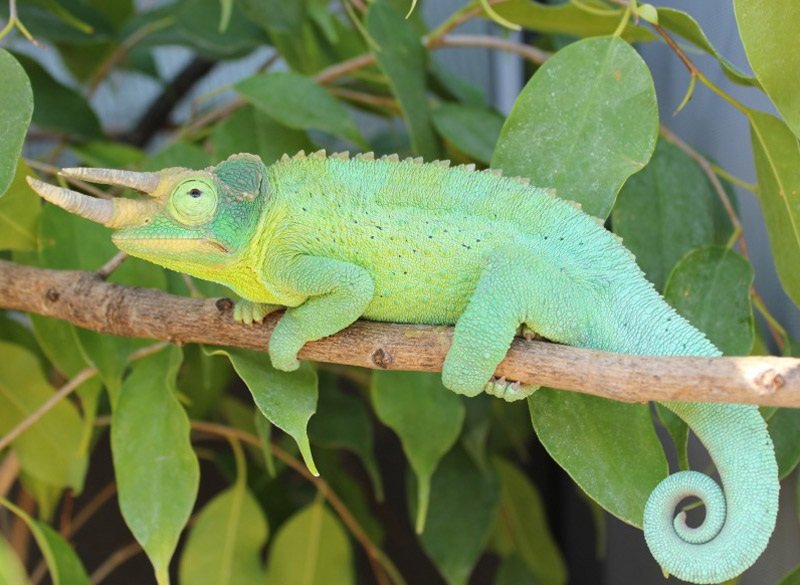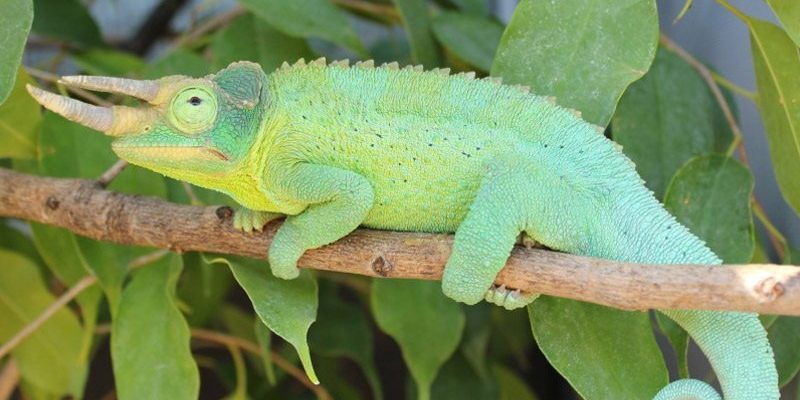
The Jackson’s chameleon has some standout features: its ability to change colors, its quirky look, and its native habitat in parts of East Africa. But when it comes to regeneration—similar to how certain species like starfish or axolotls can regrow limbs—the Jackson’s chameleon presents a different story. Understanding the biological makeup and lifestyle of these chameleons can shed light on their regenerative abilities—or lack thereof.
Understanding Regeneration in Reptiles
Let’s start with the basics. In the animal kingdom, regeneration is the process where certain animals can replace lost body parts. This process is most commonly seen in species like geckos, which can lose their tails to evade predators, and then grow them back. You might be wondering why some reptiles can regenerate while others, like the Jackson’s chameleon, cannot.
Regeneration in reptiles often depends on the anatomy and physiology of the species. For example, many reptiles have specialized cells that allow them to rebuild complex structures like tails. However, the Jackson’s chameleon’s biological makeup is markedly different. Evolution hasn’t equipped them with the same regenerative capabilities as their more fortunate relatives.
Can Jackson’s Chameleons Regrow Their Tails?
Here’s the thing: Jackson’s chameleons generally cannot regrow their tails. If a chameleon loses its tail, whether due to injury or stress, it won’t grow back like some other lizards. The tail is crucial for balance and movement, and losing it can severely impact the chameleon’s lifestyle.
To clarify, when a Jackson’s chameleon loses its tail, it doesn’t have the same regenerative cells that some other reptiles possess. Instead, the wound may heal over time, but a new tail won’t form. It’s a sad reality that leaves many owners concerned about their pet’s well-being.
Why Can’t They Regrow Their Tails?
The answer has a lot to do with their evolutionary design. Jackson’s chameleons are specialized for their unique environments. Their bodies are adapted for climbing and camouflage rather than rapid escapes. This adaptation means that their anatomy doesn’t support the complex processes needed for tail regeneration.
Additionally, the loss of a tail in Jackson’s chameleons can be a serious matter. Without the tail’s balance and stability, these creatures may struggle to navigate their environment or escape from predators effectively.
What About Limbs? Can They Regrow Those?
Unfortunately, the story is quite similar when it comes to limbs. Jackson’s chameleons aren’t able to regenerate their limbs either. If they lose a leg or toe, the outcome is the same: no regrowth. This inability is due to the same biological constraints that affect their tails.
Imagine if a chameleon lost a limb while navigating its arboreal home. That loss could significantly hinder its ability to climb and hunt. Again, this brings us back to the evolutionary traits that shape these creatures. They have evolved to thrive without the ability to regrow limbs or tails, focusing instead on their remarkable skills in camouflage and adaptation to their habitats.
The Importance of Tail and Limb Health
Given that Jackson’s chameleons can’t regenerate these body parts, it’s essential for owners to be proactive about their care. Here are a few tips to ensure their limbs and tails stay healthy:
- Provide a Safe Environment: Ensure their habitat is free of hazards that could cause injury.
- Monitor Diet: A balanced diet helps maintain overall health, making the chameleon less prone to injury.
- Regular Vet Check-Ups: Routine visits can help catch any health issues before they become severe.
Understanding the Jackson’s Chameleon’s Unique Biology
To appreciate why Jackson’s chameleons can’t regenerate, we need to dive a bit deeper into their biology. Their impressive morphology is fine-tuned for their survival needs, rather than regeneration.
For one, the Jackson’s chameleon has a specialized skeletal structure that supports its unique way of climbing and moving. Their limbs are flexible, which aids in grasping branches and perching. However, this same structure limits their ability to regenerate.
Let me explain. Regeneration typically requires certain biological processes, such as the formation of a protective sheath around the wound, and specific stem cells that can morph into the needed tissues. Jackson’s chameleons simply don’t have the right conditions set up in their bodies to facilitate this complex process.
Comparative Insights: Other Reptiles
When comparing the Jackson’s chameleon to other reptiles, you might notice some stark differences. For example, geckos can regrow their tails, while some species of lizards can even regenerate limbs. This variation in regenerative abilities among reptiles is fascinating and underscores the diverse evolutionary paths these creatures have taken.
While it’s natural to feel a tinge of sadness for the Jackson’s chameleon and its inability to regrow its tail or limbs, these creatures are marvels in their own right. Their adaptations provide them with survival skills that allow them to thrive in their environments.
So, can the Jackson’s chameleon regrow its tail or limbs? The answer is a straightforward no. However, understanding why they can’t offers insight into the remarkable world of these unique reptiles. With their impressive camouflage abilities and specialized anatomy, Jackson’s chameleons have evolved to thrive in ways that don’t require regeneration.
As a pet owner or a chameleon enthusiast, it’s vital to appreciate their unique attributes and provide the best care possible. So, the next time someone asks about a chameleon’s regeneration abilities, you can confidently share the story of this stunning creature and its remarkable adaptations. After all, sometimes embracing unique traits is what makes the animal kingdom so incredibly fascinating!

